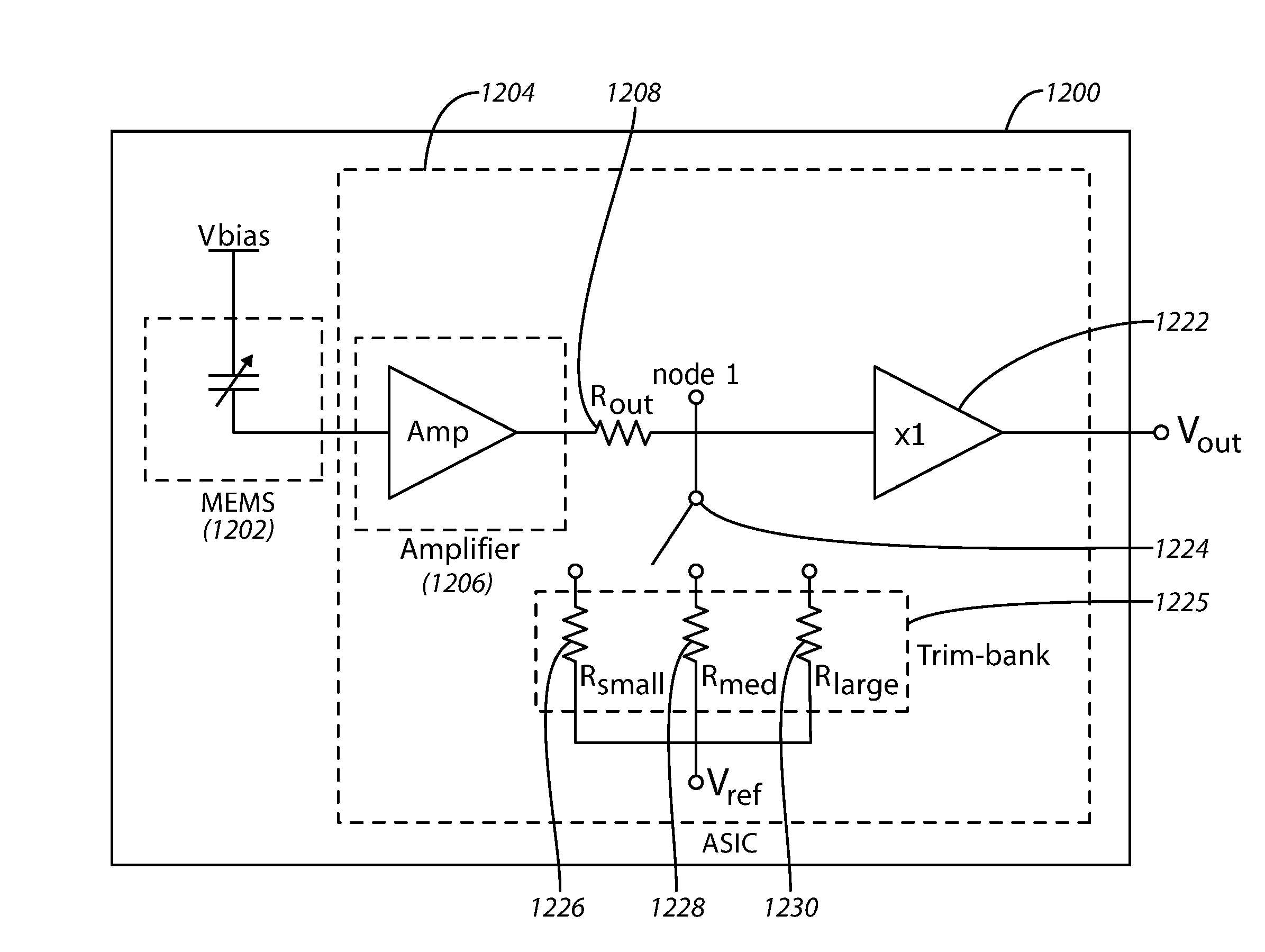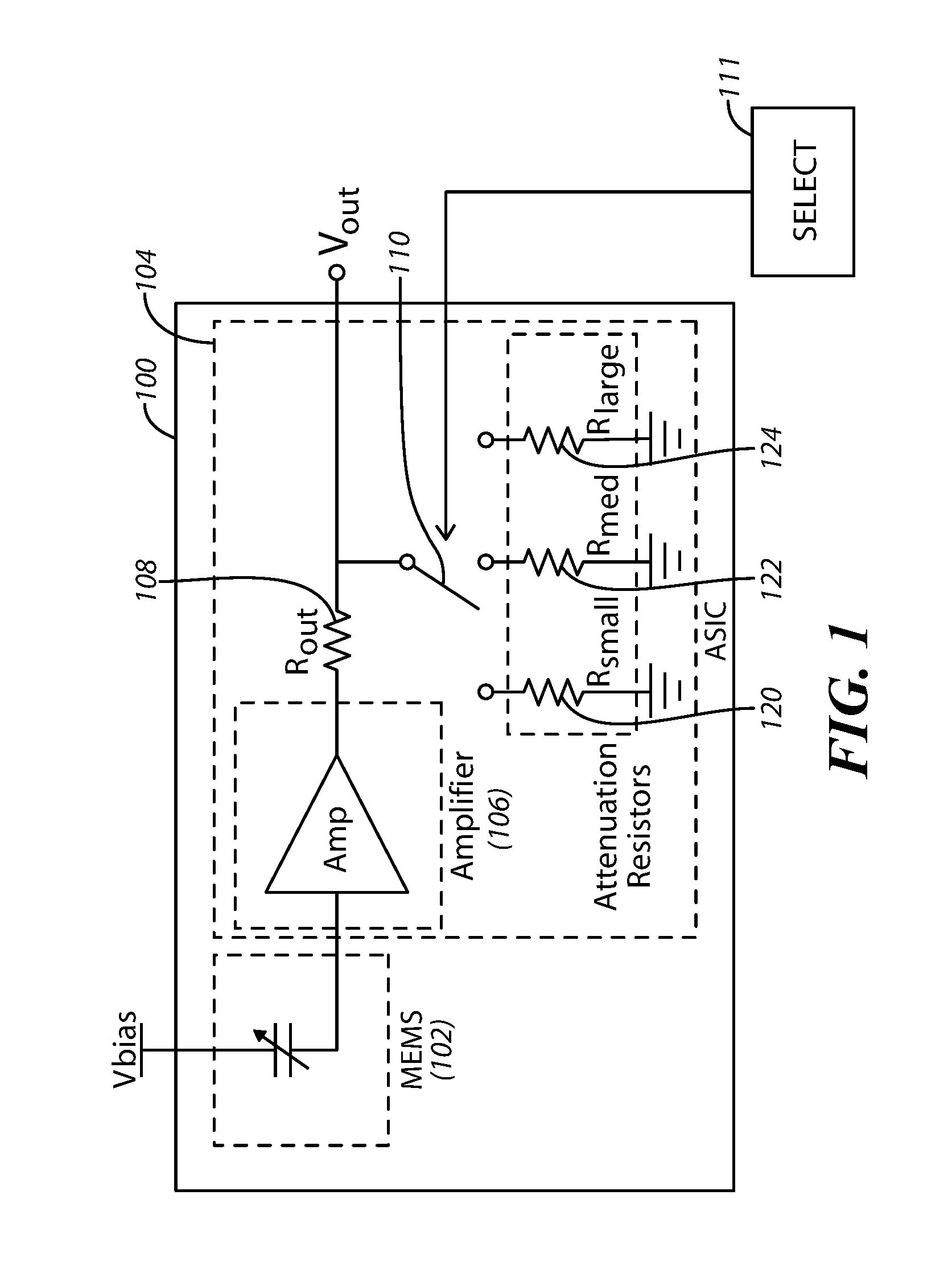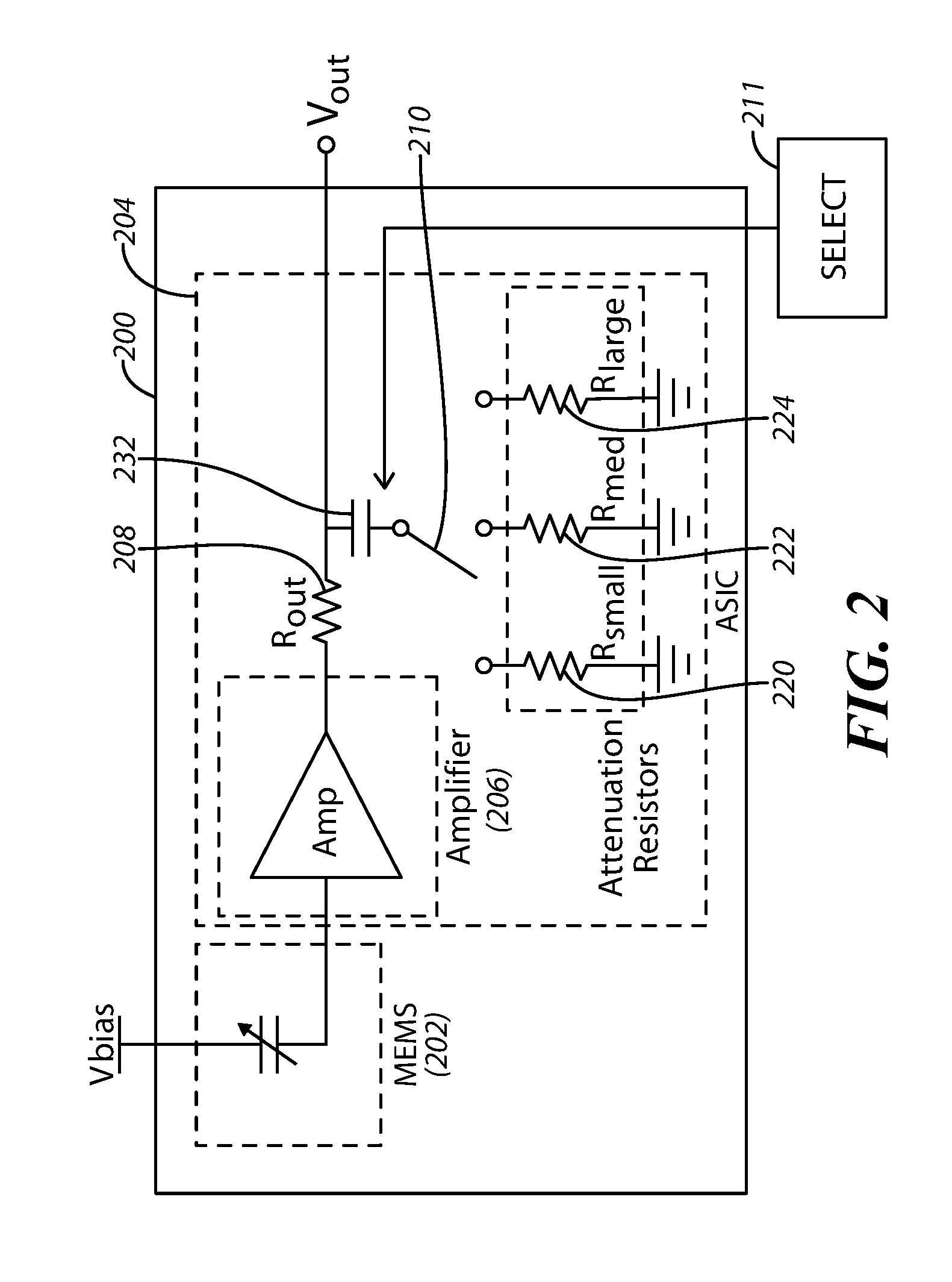Microphone With Trimming
a technology of microphone and microphone, applied in the field of microphones, can solve the problems of general user dissatisfaction, reduced noise sensitivity of the microphone, and cost of reducing the signal-to-noise ratio of the microphon
- Summary
- Abstract
- Description
- Claims
- Application Information
AI Technical Summary
Benefits of technology
Problems solved by technology
Method used
Image
Examples
Embodiment Construction
[0021]The present approaches provide microphones where the sensitivity of the microphone is adjusted (e.g., trimmed), but the signal-to-noise ratio (SNR) of the microphone is not reduced (or not substantially reduced). These advantages are accomplished in one aspect by disposing one or more attenuation components (e.g., resistors, capacitors, or active components) at the output of the microphone. In addition to disposing attenuation components at the output of the microphone, attenuation components may be placed at the input of the microphone.
[0022]Referring now to FIG. 1, one example of a microphone 100 that is coupled to a customer electronic device is described. The microphone 100 includes a MEMS device 102 and an application specific integrated circuit (ASIC) 104. The MEMS device 102 (or in some cases other sensing elements such as a piezoelectric sensor) converts sound energy into an electrical signal, which is sent to the ASIC 104. In one example, the MEMS device 102 includes ...
PUM
 Login to View More
Login to View More Abstract
Description
Claims
Application Information
 Login to View More
Login to View More - R&D
- Intellectual Property
- Life Sciences
- Materials
- Tech Scout
- Unparalleled Data Quality
- Higher Quality Content
- 60% Fewer Hallucinations
Browse by: Latest US Patents, China's latest patents, Technical Efficacy Thesaurus, Application Domain, Technology Topic, Popular Technical Reports.
© 2025 PatSnap. All rights reserved.Legal|Privacy policy|Modern Slavery Act Transparency Statement|Sitemap|About US| Contact US: help@patsnap.com



